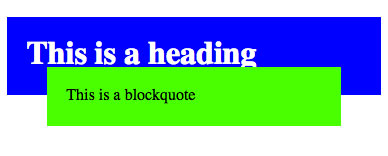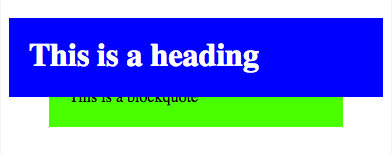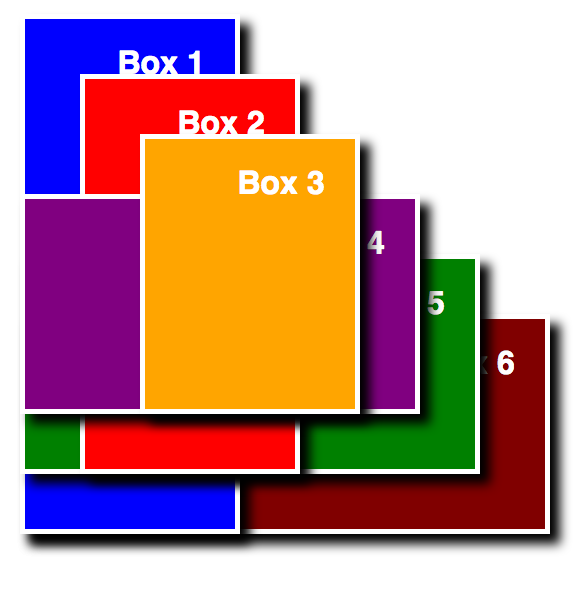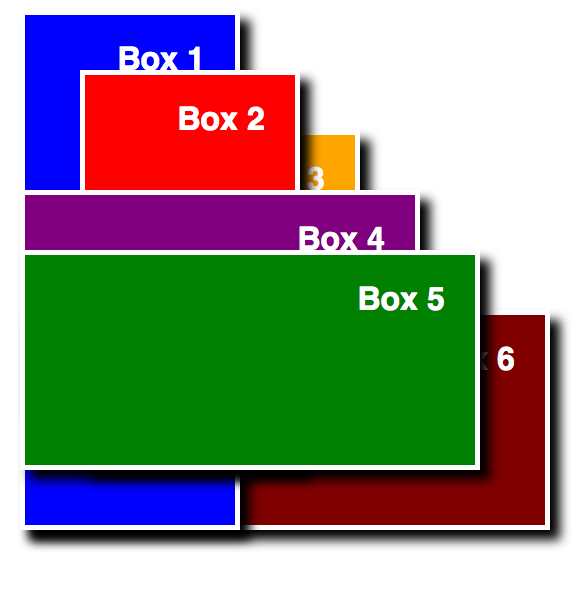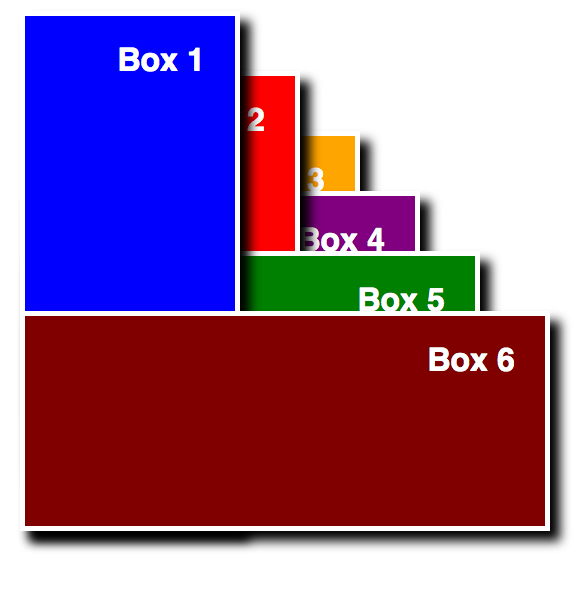Z-Index
Stacking ElementsWhen Elements Overlap
When you change the default positioning scheme (static) to relative, absolute, or fixed your page elements can start overlapping. By default the elements at the top of the HTML page will be behind elements that come further down the page. For example, take a look at the following code:
<body>
<h1>This is a heading</h1>
<blockquote>This is a blockquote</blockquote>
</body>
If the elements (<h1> and <blockquote>) overlapped, the <h1> would be, by default, behind the <blockquote>.
What is Z-Index?
Z-Index is comparable to Photoshop layers, or other programs that allow layering. When elements start overlapping we can control which one is on top by specify a Z-Index (or layer). This is done in CSS with the z-index property. The value of this property is a positive or negative number. Elements with higher numbers will be on top.
h1{
position: relative;
z-index: 10;
}
If the CSS in figure 2 was applied to the HTML in figure 1 it would cause the <h1> to move above the <blockquote>
Example Usage: div { z-index: 10; }
Activity Instructions
Here we will play around with the Z-Index of multiple overlapping boxes. This will help us understand how this property works. The adjacent gallery has several images that are screenshots of our finished goals. Choose one of these images to work from and change the Z-Index of each box in the CSS to match the goal image.
Tips for the following activity
- Negative values are legit (ex. z-index: -10;)
- The colored numbered boxes correlate with the box IDs in the CSS
- The code at the very bottom of the CSS window is just for styling the boxes. This should be ignored.

